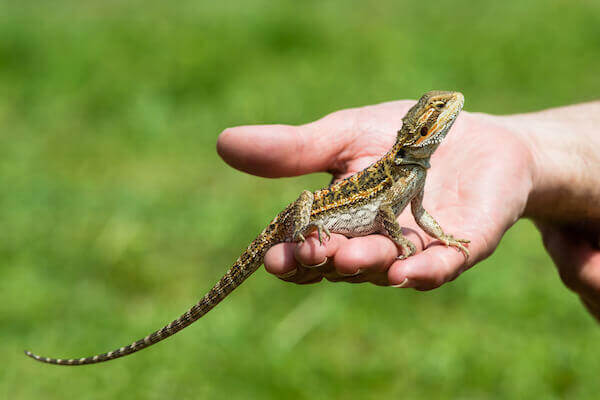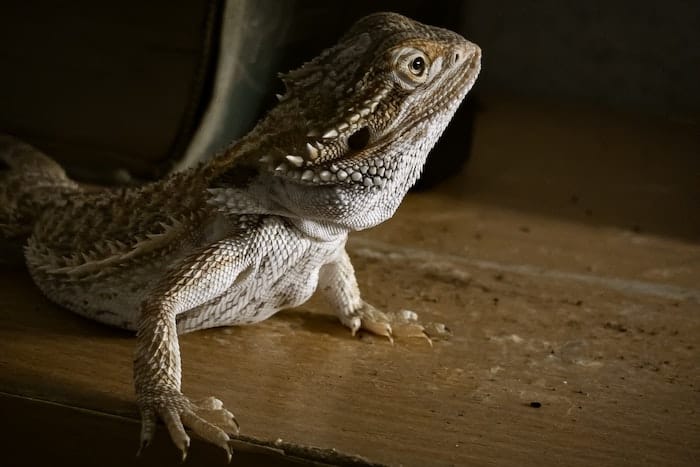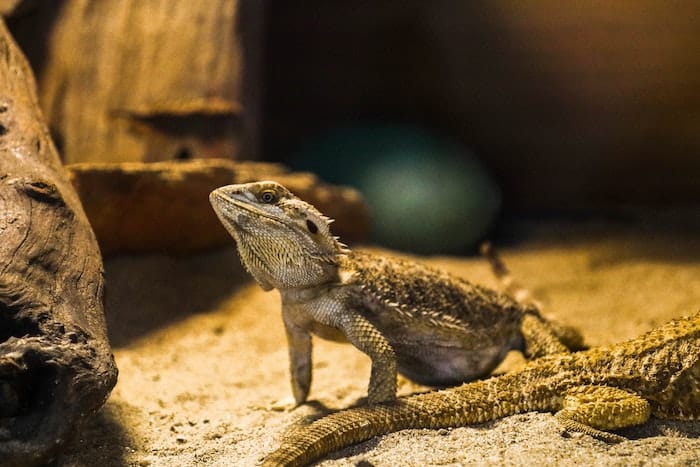We understand that getting a Bearded dragon as a new pet might be intimidating. That’s why we’re here to assist. Continue reading.
While various reptiles are suitable as pets in your home, many species require more advanced techniques when caring for them. As a result, we recommend a bearded dragon as a beginner reptile.
They’re hardly aggressive, easy to socialize with (they’ve been known to follow their owners around the home like a cat or dog), and there are numerous sources available to help you learn how to provide them with the proper care. Like any pet, however, you should still do your homework before getting one.
Let’s go over a few things you need to consider before bringing that new beardie home.
Enclosures and Accessories
While bearded dragons require a large enough enclosure for them to be able to move around, they don’t need to be as large as many other exotic species.
Initially, you’ll want a 40-gallon tank or vivarium, but ideally, as your beardie grows, you’ll want to upgrade to one that is 75 gallons.
Make sure the enclosure is wide enough for your bearded dragon to turn around comfortably. Some longer enclosures are very narrow and can make this difficult for your pet. Preferably, you’ll use an enclosure with clear sides, so it mimics their environment in the wild (there aren’t any walls in the outback) and allows you to view your new friend easily.
Then you’ll also need to provide substrate or flooring. Reptile carpet or tile is best as other things like sand and bark can cause issues. Next, you’ll need UVA & UVB lights. They require about 12-14 hours a day of these light sources.
You’ll find combination bulbs that provide both light sources. Finally, get your reptile a basking spot and a hide so they can stretch out in the light during colder times and hide when it gets hot. Sometimes both basking spot and hide are available in a single accessory.
Food and Water
Beardies are omnivores, so you’ll want to provide a diet that consists of a variety of proteins, vegetables, and as an occasional treat, fruit. Insects most commonly used are crickets or an even better source if you’re up for it, dubia roaches which are a source rich in fat. As a backup, you can occasionally offer mealworms, but be careful as they can sometimes be hard for your beardie to digest.
Vegetables can range from dark leafy greens like romaine, arugula, and collard greens to red and yellow vegetables like squash, bell peppers, and carrots. Berries are generally the best type of fruit to provide.
Remember to mix up their diet (you don’t like eating the same things all the time). Don’t use wild sources as they could have chemicals or other things on them that will make your beardie sick, and ALWAYS put calcium dust on their food to avoid calcium deficiencies, such as metabolic bone disease.
Finally, you won’t need a water bowl in their enclosure. Bearded dragons get hydrated by consuming water in the food they eat or through condensation, dew, etc. We still recommend misting their enclosure once a day but be careful; you don’t want water to go directly in their ears. This can give your beardie an ear infection due to not having a protective covering over their ear to keep water out.
Shedding
Like all reptiles, your new pet beardie will shed its skin occasionally. This is generally triggered as your bearded dragon grows larger. Unlike snakes, however, which often shed their skin in a single piece, beardies like most other reptiles will shed in multiple pieces over time.
Although we said above that you don’t need a water dish in their enclosure, giving your beardie the occasional bath in a shallow-filled tub of warm water can help them if they are having a difficult time shedding. This also has the added benefit of helping them to digest their food. It is very important, though, to make sure that you don’t try to pull off any shed that is still attached.
The skin underneath may not be fully ready to be exposed or you may even injure your beardie by pulling it off too soon (kind of like pulling a scab off before a wound has healed).
Socialization and Enrichment
While not generally social in the wild or even in captivity in a same-sex environment, bearded dragons can become very social once you have spent the time to build trust and a bond with them.
As pets, numerous owners have beardies that will follow them around the house, go for walks with them (leashed, of course), or sit in their laps or on their shoulders and watch television. Make sure if you commit to having one as a pet that you set aside time daily to hold them and form a bond. Holding your beardie also has the benefit of providing much-needed enrichment for them.
Enrichment can come in a variety of other forms but helps to mentally and physically stimulate your pet. Some simple things to do to engage your bearded dragon can include introducing new foods into their diet, adding new accessories, or changing the layout of their enclosure.
To Conclude
I hope you find this Bearded Dragon Care Guide to be informative and useful! If you keep these things in mind, you are well on your way to being a great pet parent for your new bearded dragon.
Related Reading



